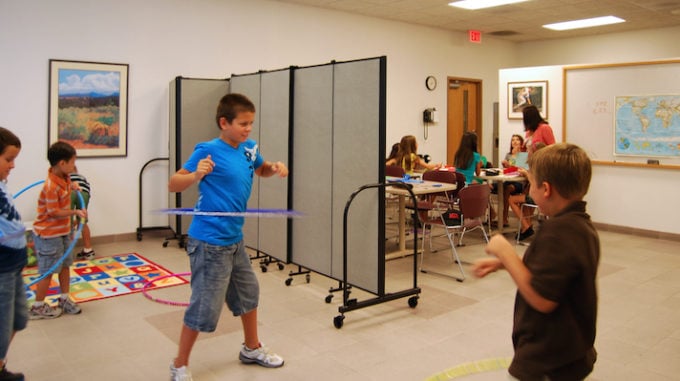How and Why to Downsize Your Classroom
Market: Education

Photo source: www.freepik.com
Why Should We Downsize Classrooms?
For many years, the topic of class size has caused a heated debate between educators and administrators. Most teachers would agree that they prefer to have smaller classes, even though it is not always feasible. It is easier for them to connect with their students on a more personal level and spend more time preparing for the day’s lesson plan. To downsize classrooms in bigger schools would be a smart move.
The recommended class size is only about 18 students per 1 teacher ratio. While it would be ideal to maintain that, most schools simply don’t have the numbers in staff. Budgets and even applicant interest are factors administrators consider when setting up their staff roster. Though they can strive for low student to teacher ratios, the average American class size is about 23 students and can go all the way up to 40. That is more than double the recommended ratio.
Now, as schools and institutions prepare to reopen after the pandemic, smaller class sizes have become even more essential. Restrictions of how many people in a room vary by region, but most schools would likely want to have small groups of 10-20 people allowed maximum for a while. Downsizing classroom sizes will help this feat.
How To Do It?
- Staggered Schedules
A staggered school schedule can happen in a few different ways. According to NPR, some schools are planning on having a rotation of kids coming in every other day. One group will come in on Monday, Wednesday, and Friday and the others on Tuesday and Thursday. To make the number of days even, these kids can switch from week to week. However, this technique of staggering could be hard for students to get into a rhythm. Especially in cases of time extensive projects, it can be challenging to remember where it was left off from previous work.
- Change in Curriculum
Since students will only be in school for half of the time with this tactic, the curriculum may need adjustments and cuts. Since there is plenty of time to rearrange the topics taught for the next school year, it gives districts the opportunity to reevaluate what’s important for students to learn and what’s not. Sometimes to reset, it’s important to bring it back to the basics. Teach the parts of courses that will benefit the students’ future the most. If the change in curriculum isn’t feasible, continue online projects and assignments for the days the students aren’t in session.

- Use room dividers to section off your classroom.
In lieu of an expensive renovation or cutting teachers, an affordable way to downsize classrooms is to use Screenflex Portable Room Dividers. Screenflex offers dividers to fit rooms of all shapes and sizes. Each panel of the screens has a honeycomb core in the middle which helps absorb sound in the room. The fabric is also tack-able which is great for displaying materials. Many teachers use these dividers for a variety of reasons and can be a great addition to any school. With a staggered schedule especially, dividing up the classroom space can help enforce the limit for social distancing.
Downsizing classrooms can seem daunting but there are solutions that can help benefit both students and teachers after this pandemic.